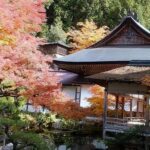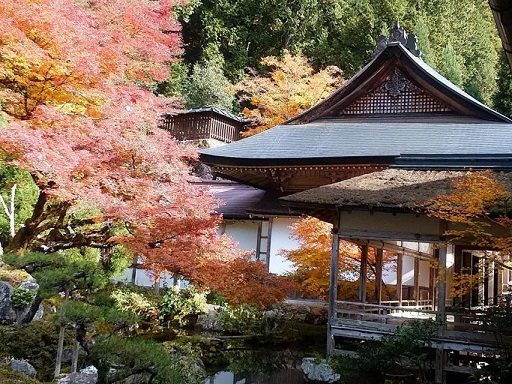 If you are planning a trip to the ancient capital of Japan, chances are you will have seen images of many iconic sites and be lured by their beauty. Looking beyond the major sites into some of the areas of Kyoto’s outskirts can be very rewarding and help you get to know the city in a deeper sense. Taking day or half-day trips you can beat the crowds whilst discovering some of the city’s best towns, temples and nature. Discover the spiritual and mystical stories of the ancient capital and the important role of nature throughout the centuries, from Kyoto’s forests to pristine and precious waters. Here we introduce a selection of Kyoto gems not to miss.
If you are planning a trip to the ancient capital of Japan, chances are you will have seen images of many iconic sites and be lured by their beauty. Looking beyond the major sites into some of the areas of Kyoto’s outskirts can be very rewarding and help you get to know the city in a deeper sense. Taking day or half-day trips you can beat the crowds whilst discovering some of the city’s best towns, temples and nature. Discover the spiritual and mystical stories of the ancient capital and the important role of nature throughout the centuries, from Kyoto’s forests to pristine and precious waters. Here we introduce a selection of Kyoto gems not to miss.
Keihoku
The forested Keihoku area is in the northern part of Kyoto City and is rich in nature. The area was imperial from the ancient times and its forests supplied wood to the central part of the city carried on rafts down the Hozugawa River and was used as construction material to build the ancient capital of Kyoto (Heian-kyo) and to rebuild the Kyoto Imperial Palace after it was destroyed by fire. Today you can visit the forests, villages and even experience a farm stay.
Ōhara
In Kyoto City’s northeast upstream from the Takano River, Yase and Ohara districts offer beautiful mountain scenery in every season, and there are many historic temples. Just 40 minutes from central Kyoto, Ōhara is a beautiful farming village and home to a particular musical style of Buddhism called shōmyō, with most temples in the area practicing it. The temples in the area sit in peaceful surrounds. The top of Mt. Hiei is surrounded by the sacred atmosphere of the World Heritage Enryaku-ji Temple, and is the most magnificent scenic area in Kyoto City.
Fushimi
The Fushimi area, in the southern part of Kyoto City, is on the historical road between Kyoto and Osaka, the river port of Fushimi was an important logistic point of water transportation. There is nothing ‘hidden’ about Fushimi Inari Taisha, the shrine famous for its many vermillion gates, it has become one of Kyoto’s most visited and photographed iconic spots. But take a step further, and discover this interesting area, central to Kyoto City’s sake production for centuries. The area is rich in high-quality water, making it one of Japan’s most prominent sake brewing areas, with over 20 breweries. Fushimi is full of stories related to water and to history. It also became the stage of historical events about 150 years ago, when the activist samurai fought for the restoration of imperial rule, leading to Japan’s modernisation. The local shopping streets, sake breweries and restaurants create an attractive townscape not to be missed.
Mount Kurama & Kibune
This is a lovely area for a day trip in Kyoto’s north. Start by ascending Mt. Kurama by cable car or on foot to Kurama Temple which dates back to the 8th century. The temples main deity is said to have the power to create all things in the universe. Also known to be the birthplace of reiki, a holistic healing art started in the early 1900s. Mt. Kurama has a history steeped in mystical beliefs.
Not far away is Kibune and Kifune Shrine enshrining the deity of water, who is in charge of rainfall and stopping rain. Known by locals as a place to discover and enhance your love success, fortune-telling using the sacred water that springs from the rocks on the shrine grounds is very popular. In summer Kyoto locals head to Kibune to avoid the heat. It is famous for the ‘kawadoko’ decks built over the Kibune river creating a natural form of air-conditioning. During the summer, you can enjoy a traditional Japanese meal on a kawadoko in this serene and beautiful place. It’s possible to hike between Kurama and Kibune. The 2-to-3-hour easy hike will take you to some other lovely temples in the hills along the way.





















